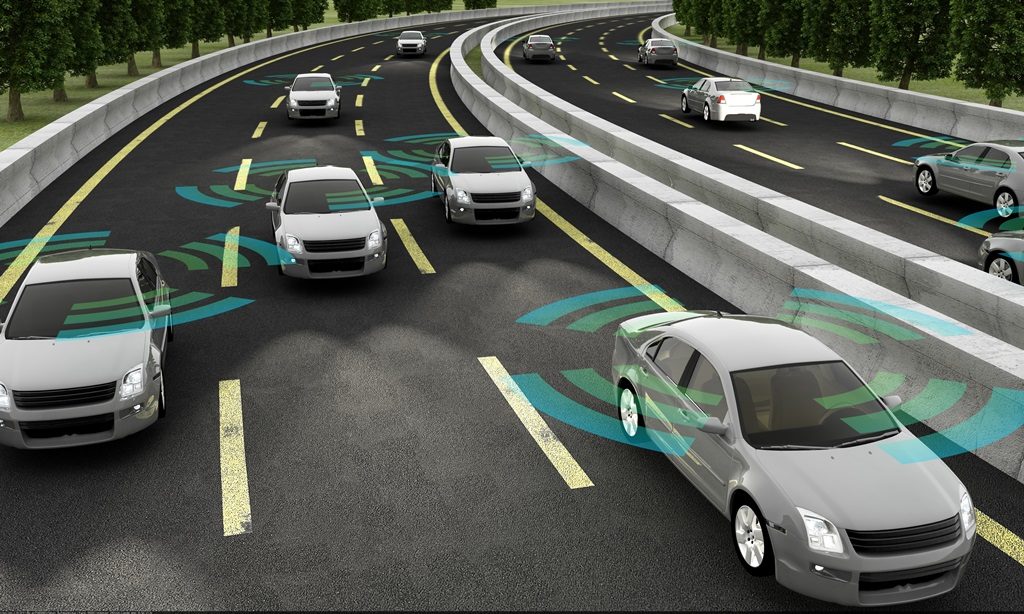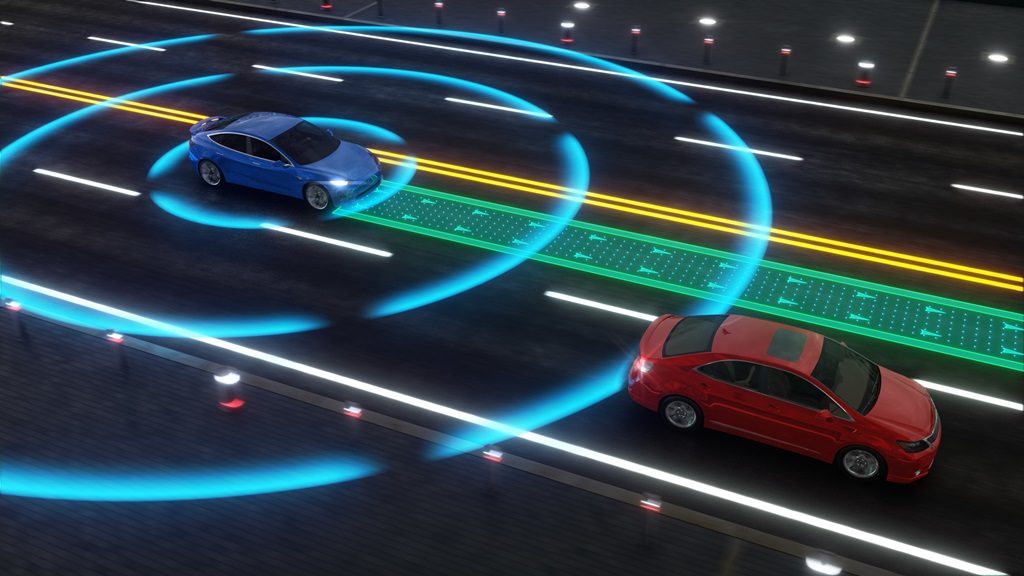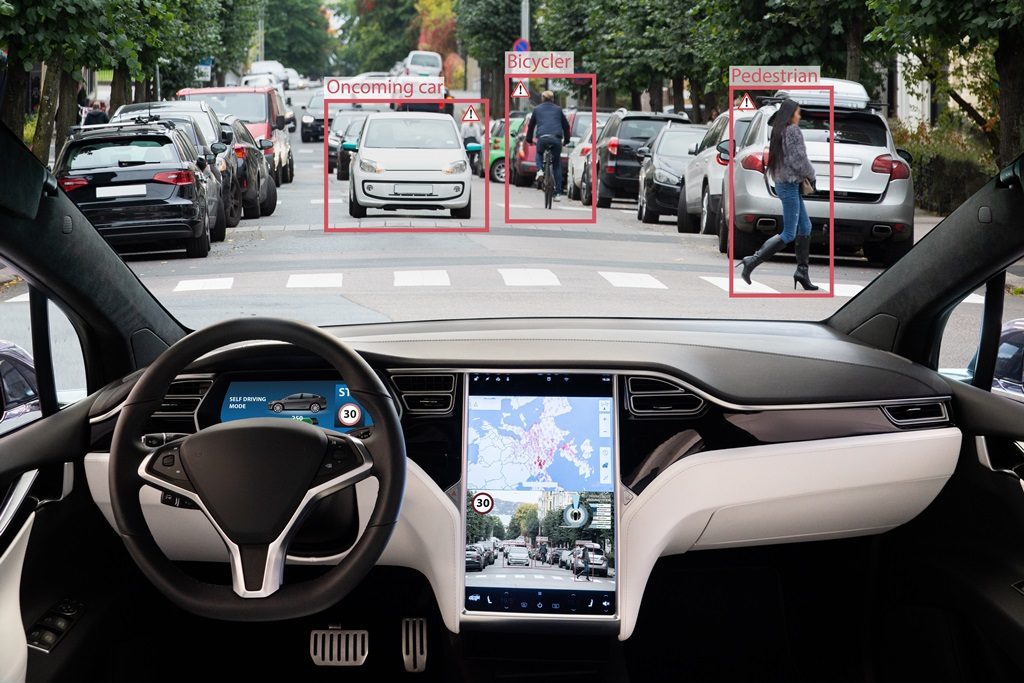The truth is, no matter how careful we try to be on the road, accidents happen. Sometimes, nature is the cause, but more often than not, people are the ones to blame. According to the National Motor Vehicle Crash Causation Survey (NMVCCS), more than 90% of car crashes in the U.S. are caused by driver error.
It may not be easy to accept, but people tend to behave inconsistently on the road. Drivers’ reactions, reflexes, and decision-making can be affected by many factors, including fatigue, emotional exhaustion, and even their general well-being. It’s also important to note that distracted and drunk driving are two of the leading causes of vehicle accident deaths and injuries in the country.
In this article, we’ll talk about how advanced driver-assistance systems (ADAS) try to mitigate these road accidents caused by human error, and what the potential risks are of using this technology. First, we’ll go over exactly what ADAS is, along with its common features.

What is an advanced driver-assistance system (ADAS)?
Since human error accounts for more than half of the car crashes that happen each year, car manufacturers have striven to develop advanced driver-assistance systems, which are made up of various human-machine interface safety features that help with driving or parking. These advanced features are controlled via the car’s computer, with information being fed by various sensors and devices.
What is the purpose of advanced driver-assistance systems?
The main purpose of ADAS is to improve vehicle safety by utilizing the latest technology. Advanced driver-assistance systems form the backbone of autonomous technology, and are constantly being enhanced by car manufacturers. A car equipped with ADAS is considered a semi-autonomous vehicle because it still requires input from a human user. In contrast, a fully autonomous vehicle, as the term implies, doesn’t require any human input, and is therefore referred to as a self-driving or driverless car.
Basic driver-assistance features aim to supply the driver with essential information to make certain adjustments or maneuvers. These include audible and visual warning signals designed to grab the driver’s attention. ADAS, on the other hand, temporarily controls the vehicle when triggered by any changes in the driver’s behavior. It can automatically apply the brakes, steer back to a lane, and change speed.
Common Features of ADAS
Car safety features, including those that are part of ADAS, fall under various categories, such as crash avoidance, crash protection, and driver comfort. Here are a few examples of common ADAS features:
1. Adaptive Cruise Control
This is an advanced form of the standard cruise control that drivers use to set and maintain a particular speed. The advantage of adaptive cruise control is that it can automatically slow your speed down relative to the speed of the car in front of you, which can help with maintaining safer driving distances.
2. Autonomous Emergency Braking (AEB) and Collision Avoidance System
Autonomous Emergency Braking (AEB) automatically controls the brakes when sensors detect a possibility of a crash. Cars with AEB use sensors that measure the proximity between your vehicle and any object, car, or pedestrian in front of you. Meanwhile, a collision avoidance system can involve steering inputs as well as automatic braking when sensors detect that the vehicle might crash.

3. Lane Assist
Modern cars have multiple sensors and LIDARs (Light Detection and Ranging) that feed a computer with all the necessary information to keep the car functioning properly. Cars with lane assist technology utilize these sensors to actively keep the vehicle steady in its lane. If the sensors detect even a slight drift from the vehicle’s current lane, the system nudges the steering wheel to keep the vehicle within the right road markings.
4. Automatic Parking or Reverse Park Assist
Automatic parking uses sensors and cameras located around the vehicle to take over your steering wheel, brakes, and accelerator when driving your vehicle to a designated parking lot. Reverse park assist is the most common form of automatic parking, which makes backing into a spot as easy as pressing a button, be it perpendicular or parallel parking. Because of their convenience, self-parking cars are becoming more and more prevalent.
5. Drowsiness-Detection System
Physical fatigue, mental stress, and emotional exhaustion can all negatively affect driving tasks like focus and critical thinking. A drowsy driver may easily miscalculate, misjudge, and commit errors. The drowsiness-detection system uses multiple sensors and a special algorithm to detect the driver’s level of drowsiness. If the driver exceeds a certain level of drowsiness, the system will alert the driver (e.g., via a flashing icon on the vehicle’s instrument panel).
Can advanced driver-assistance systems also be dangerous?
There’s no denying that advanced driver-assistance systems can help drivers stay safer on the road, but are there drawbacks to relying on autonomous technology for driving tasks that people used to do on their own? Let’s take a closer look.
Some drivers are unaware of what ADAS do.
According to a report published by the International Institute for Highway Safety (IIHS), drivers’ understanding of ADAS can’t keep up with the technology itself. The report, which was part of a survey conducted in early 2019, concluded that some people are unaware of what ADAS can and can’t do.
IIHS asked over 2,000 participants about Level 2 driving assistance systems, including Tesla’s Autopilot. Level 2 driving automation systems are designed to perform two different driver assistance systems under the driver’s supervision. These are far from completely autonomous systems in self-driving cars, which fall under Level 5.
48% of the respondents in the survey agreed that it is safe to take their hands off the wheel when the system is engaged, while 6% thought taking a nap while Autopilot is on would be safe. These are clear cases of ADAS misuse, which could lead to road accidents.

There’s a danger that ADAS are making drivers complacent behind the wheel.
Parking the car, keeping it in its lane, and staying completely focused while driving are core driving skills that should be mastered by all drivers. But with advanced driver-assistance systems partially taking over these activities, are drivers becoming more complacent as a result?
In 1908, psychologists Robert Yerkes and John Dillingam Dodson performed a study on the relationship between performance and mental arousal, which formed the basis for the Yerkes-Dodson law. It states that performance improves with the presence of mental arousal, but only to an extent. The key idea is that in order to keep a person engaged in any task, the right amount of mental stimulation is needed; too low or too high and the person may either get tired and bored or stressed and panicked.
With ADAS taking over some essential driving tasks like parking and keeping the car in the lane, drivers could become too reliant on the technology, and therefore may miss more potential road hazards around them. This example shows Yerkes-Dodson law fully in effect because too little mental stimulation has made the driver more complacent and therefore in higher risk of danger.

Understanding the Limits of ADAS
The problem with ADAS isn’t the technology itself but with the confusion over what it can and can’t do. Drivers need to take note that complete vehicle automation technology is far from being perfect. There are running driverless prototypes but development is ongoing, and these vehicles are different from cars in the marketplace equipped with ADAS. As advanced as they are, these systems are designed to be a secondary safety feature, and the primary one in charge of overall safety is still the driver.
Any information provided on this Website is for informational purposes only and is not intended to replace consultation with a professional mechanic. The accuracy and timeliness of the information may change from the time of publication.



















